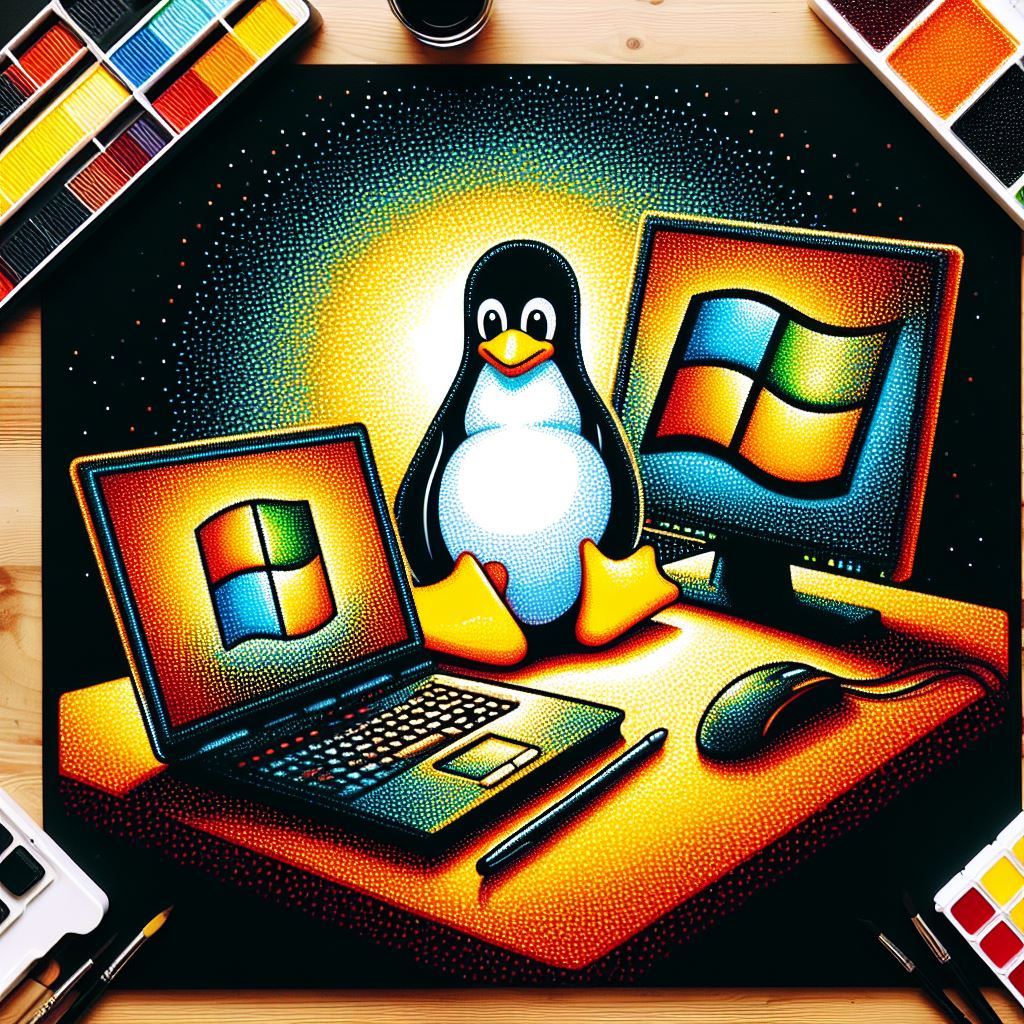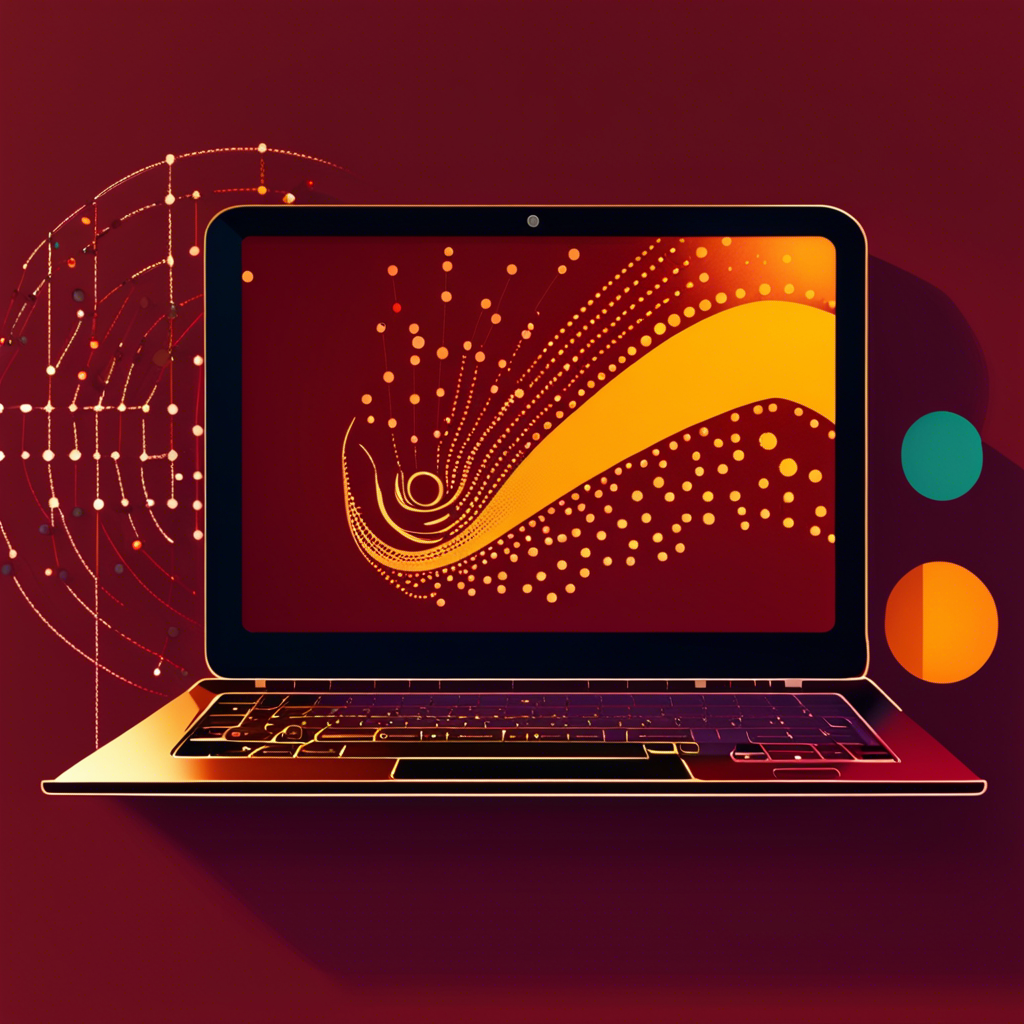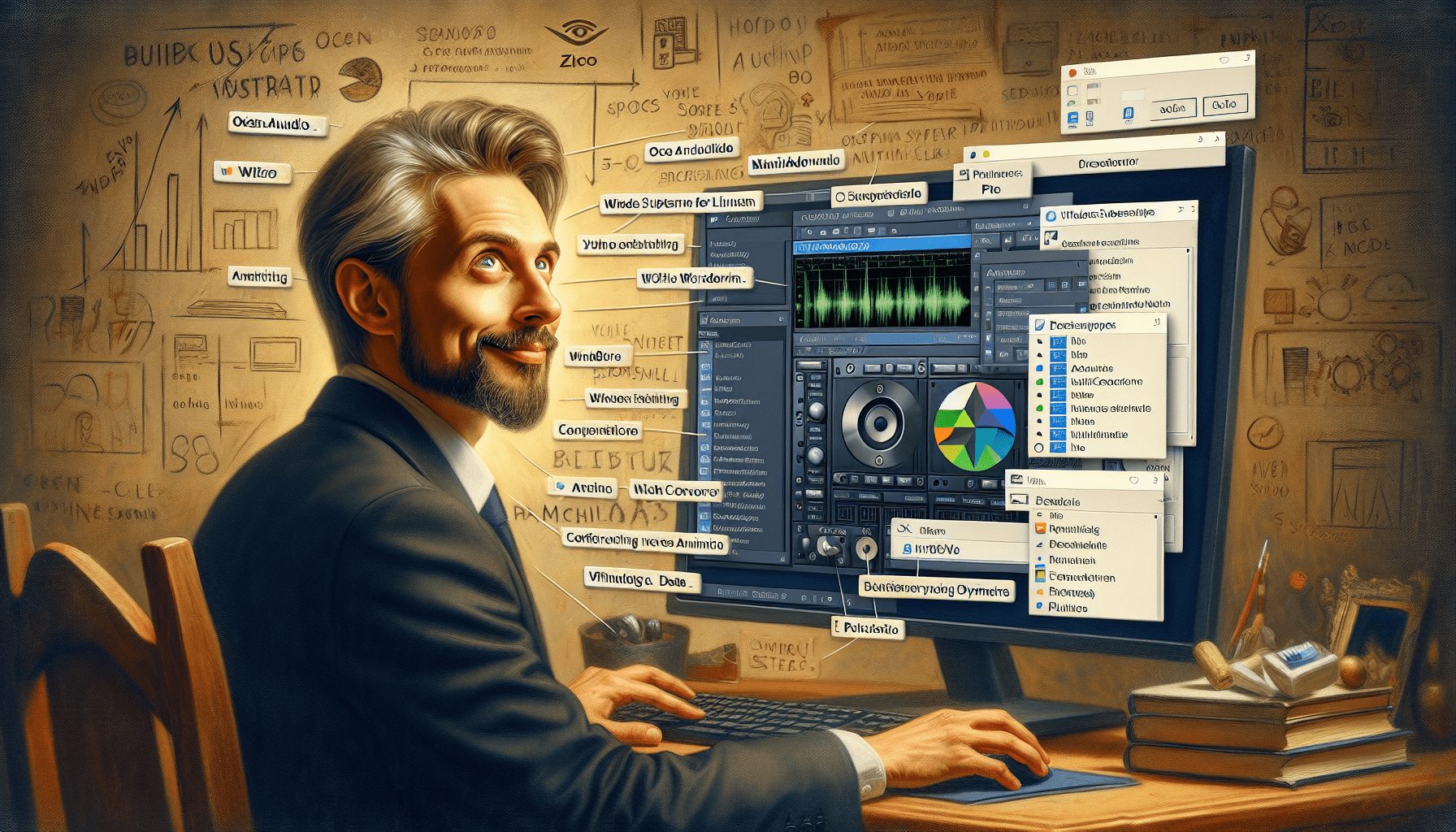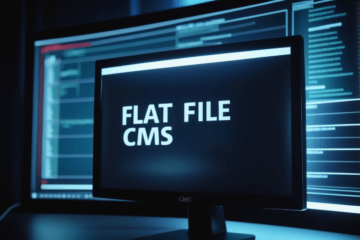In early January 2024, I decided to switch to Windows from Linux. I’ve been a dedicated Linux user for a solid seven years, even though I ran a dual-boot system on my Lenovo ThinkPad laptop with Windows 11 and Linux Mint. However, I made the decision recently to switch to Windows from Linux on both my desktop and laptop. This move was motivated by several factors.
Summary
The author (that would be me!), a long-time Linux and Mac user, switched to Windows 10 after seven years. He found the interface intuitive, borrowing the best features from other platforms. The ability to customize settings for his workflow, like display resolution and keyboard shortcuts, improved his productivity. He discovered useful features like virtual desktops, enhancing his multitasking and navigation.
Reasons for Switch to Windows from Linux
Applications and Productivity
Key among them were the specific software requirements essential to the operations of my business.Main purpose was to use audio editing software Ocenaudio and some desktop applications for SaaS.These included the likes of Zoho Workdrive, Nimbusweb, and Plutio.
I found that these software programs ran more smoothly and were more user-friendly on Windows compared to Linux or Mac. These worked via web browser on Linux but their desktop apps were Windows-specific. Maintaining a uniform operating system throughout my devices greatly simplified my workflow, making the transition between devices quite effortless.I viewed Windows 10 as an excellent opportunity to reacquaint myself with the Windows environment, as it was the final version I had familiarized myself with during my corporate tenure. It was a bonus that I had a Lenovo Thinkcenter M900 Tiny desktop at my disposal.
I had to install Windows Subsystem for Linux (WSL) separately to use rclone for syncing data and for ssh sessions, more out of habit from using these tools in Linux.
My Surprising Switch to Windows 10
I was pleasantly surprised by how quickly I adapted to Windows 10. The interface was intuitive with a layout similar to my previous OSes. Customizing settings to fit my workflow was easy. I also discovered handy features like Snap Assist for multitasking and virtual desktops for organization. Finding suitable software alternatives like Notepad++, Paint.NET, and VLC player was not difficult. The stability and performance of Windows 10 impressed me as well. I have experienced fewer crashes compared to previous OSes.
It took some time to adjust to the prominent taskbar in Windows 10. However, I now appreciate its functionality for switching between applications and previewing open windows. Overall, I’m thrilled with Windows 10. The integration with Microsoft Office, wide app selection, and robust security have met my needs for both work and personal use. While Linux and Mac will always have a place in my heart, I’m excited to continue exploring what Windows 10 has to offer.
The Journey So Far
Transitioning between operating systems always comes with its unique set of challenges. This is particularly true when making the switch to Windows from Linux, an open-source platform. The most significant challenge was acclimatizing myself to the new user interface (UI) and file management system, reacquainting myself with keyboard shortcuts and workflows, and finding suitable alternatives for frequently used tools like SSH, Rclone, etc.
However, after investing a few days in understanding how things operate in this new environment and seeking guidance from online tutorials, I successfully overcame these hurdles! Interestingly, features like native SSH support in Windows were particularly helpful.
Learning from others
Hearing about people revisiting technologies they once abandoned always makes for an interesting narrative, especially for solopreneurs who often rely on their personal preferences and skills to select appropriate tools for their business. A solopreneur I know recently made a surprising switch. Since 2013, he had exclusively used Mac or Linux but decided to return to Windows 10 for his desktop. After a gap of almost 7 years, this transition was quite a shift! So, what influenced this decision?
The primary motivator was his need to use certain applications unavailable on either Mac or Linux. Additionally, he found himself increasingly dependent on cloud storage services like Dropbox and Google Drive , which are more seamlessly integrated with Windows than other operating systems (OS). Given his current needs and workflow requirements, the switch seemed to be the most suitable option.
It was not all smooth sailing
However, such a significant change was not devoid of challenges, mainly revolving around unlearning old habits while learning new ones! Some of the challenges faced while making switch to Windows from Linux included :
a. understanding folder structures and file formats
b. dealing with more technical issues like syncing files with storage servers via SSH/Rclone, and
c. Re-learning the functioning of terminal commands in Windows compared to Linux.
These factors meant that it took some time for him to feel comfortable in his new OS environment, but he soon caught up and started taking full advantage of all that Windows had to offer.

Applications that helped in the transition
Audio Editing
Audacity and Ocenaudio are fantastic open-source options, but Windows offers native support for Adobe Audition and Pro Tools, industry-standard tools I frequently collaborate with clients on.
Office Applications
While LibreOffice and Onlyoffice are capable alternatives, I found them lacking in features and compatibility compared to Microsoft Office. Cloud-based solutions like Zoho Office and Office 365 were tempting, but the lack of offline access and reliance on internet connectivity made them impractical for my workflow. You can read more about my experience with online office applications in my post here.
Browsers
While I appreciate the privacy focus of Firefox, the lack of native support for various Chrome extensions (essential for my workflow) ultimately led me back to Chrome-based browsers like Vivaldi and Ulaa.
Productivity and User Experience
The initial transition back to Windows involved an unlearning and relearning curve. However, once I reconfigured my settings and workflow, I experienced a significant boost in productivity. Access to familiar tools and a more streamlined workflow made Windows a better fit for my needs.
Updates
The simplicity of apt-get updates in Linux spoiled me. Windows Updates, while easier than manually managing drivers, felt intrusive and often restarted my machine at inconvenient times.
Package Managers vs. Windows Store
While I enjoyed the control and flexibility of dpkg and apt-get, the Windows Store offered a more streamlined and user-friendly experience for finding and installing software. However, the constant need for administrator privileges during installation felt like a step backward.
Privacy and Data Sharing
Windows’ reputation for data collection and sharing raised concerns. Though I implemented privacy-enhancing tweaks, the lack of granular control compared to Linux made me uneasy.
Cloud Storage and Syncing (Rclone vs. Filezilla)
While rclone provided powerful and flexible cloud storage management, it required command-line expertise. Filezilla offered a GUI-based solution, but its feature set felt limited. Thankfully, the introduction of native SSH support in the Windows command line and rclone for Windows provided a more balanced solution.
Hardware Compatibility Issues
My TP-Link Archer 5Ghz Wi-Fi adapter experienced connectivity issues on Linux. Windows 10, on the other hand, recognized it flawlessly, highlighting the occasional compatibility challenges with specific hardware in Linux.
Backup, Power Management, and Startup Applications
Windows offered easy backup solutions and familiar power management options, simplifying these tasks nearly at par with Linux. However, the sheer number of startup applications on Windows significantly impacted boot times and performance.
Limitations and Frustrations on Windows
I did not install antivirus software on Windows. Had to configure VPN application on Windows instead of using command line like ufw on Linux.
Overall experience during the transition
The transition back to Windows was not without its challenges, but the benefits ultimately outweighed the negatives. The availability of industry-standard tools, seamless integration with my existing workflow, and the overall user experience made Windows the better choice for my needs.
To sum things up, switch to Windows from Linux after a seven-year hiatus was a challenging but ultimately rewarding experience. While I miss the flexibility and control of Linux, the increased productivity, compatibility, and ease of use in Windows outweigh the drawbacks for my current solopreneur workflow.
Additional Notes
My heavily customized Lenovo Thinkcenter M900 Tiny with its i5/6500 T Processor, 32 GB RAM, and various storage drives performed flawlessly on Windows 10. The large number of startup applications was a significant annoyance on Windows, requiring manual adjustments to optimize boot times and performance.
This is just a glimpse into my journey back to Windows. If you’re considering a similar switch, I encourage you to weigh the pros and cons carefully and choose the operating system that best suits your specific needs and workflow.
 |
 |
Parting Thoughts – Switching to Windows
In conclusion – while it took some time getting used too, the switch turned out well enough ! It gave me access too many great features offered by windows and better compatibility with hardware components, such as 5GHz wifi supported natively. In Linux, every time I have to look up the manual and run the configuration scripts.
In terms of productivity differences, the search results indicate there is little difference between Linux and Windows if the required software is available on both platforms. Customization capabilities in Linux can help speed up workflows. However, Windows offers better compatibility with most business and productivity software, along with an intuitive interface, making routine tasks efficient.
All things considered, switching back over to Windows from Linux wasn’t nearly as difficult or daunting task as initially anticipated – thanks largely due modern advancements made by Microsoft team making transition smoother than ever before !

All things considered, switching back over to Windows from Linux wasn’t as difficult or daunting task as initially anticipated – making transition smoother than ever before !
Update January 2024
Microsoft had announced that Windows 10’s support for consumer desktops is scheduled to end on October 14, 2025. If my Thinkcentre desktop (2017 vintage) is still in use by end 2025, I might reverse the switch to Windows from Linux (i.e switch back to Linux).
Frequently Asked Questions
- What made you switch from Linux or Mac to Windows 10?
I switched to Windows 10 for its wider software compatibility and familiar interface, despite the stability of Linux and sleek design of Mac. - How was the transition from Linux or Mac to Windows?
The transition was challenging due to the differences in open-source features and file organization. However, Windows 10’s user-friendly interface and software compatibility made it a reliable choice for everyday tasks. - Do you miss any features from Linux or Mac in Windows ?
I miss the easy customization and intuitive terminal interface of Linux and Mac. Windows 10 feels more limited in these aspects. - id you face any compatibility issues with Linux or Mac-specific software on Windows 10?
No, I didn’t face any compatibility issues. Windows 10 integrates well with most Linux or Mac-specific software and hardware. - Will you stick with Windows 10 or return to Linux or Mac?
While I enjoy Windows 10’s interface and software range, I might return to Linux or Mac as technology evolves and better aligns with my needs.



